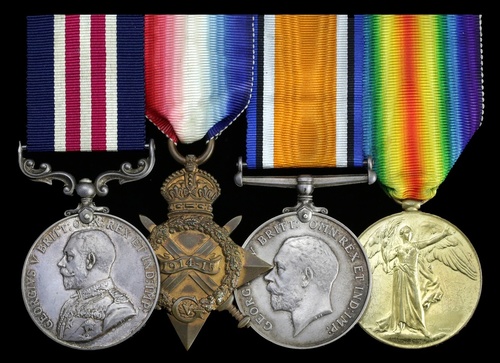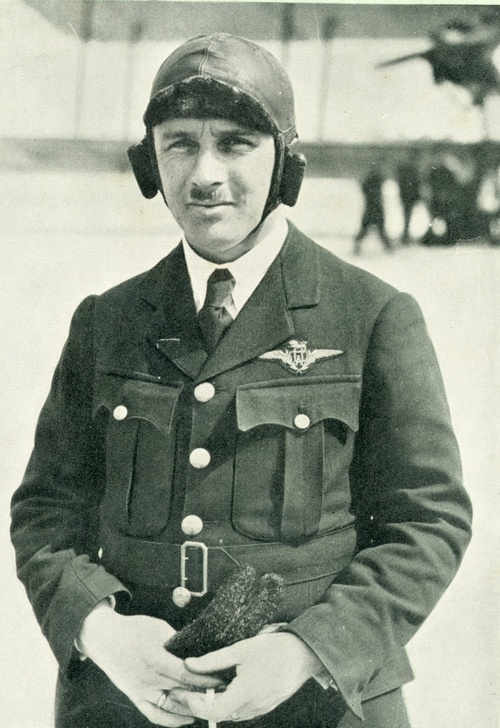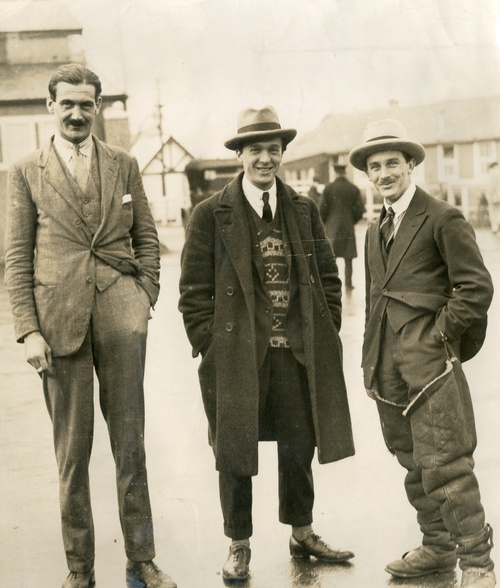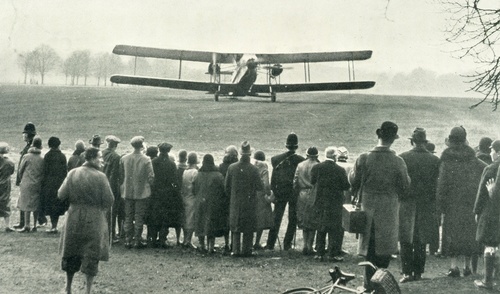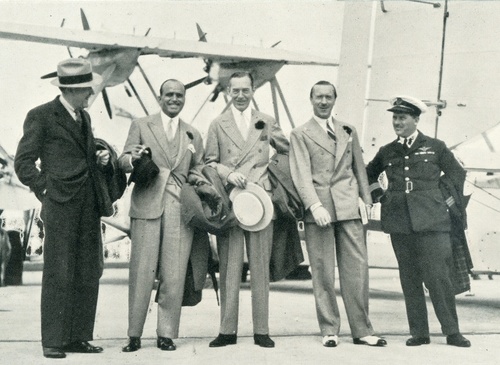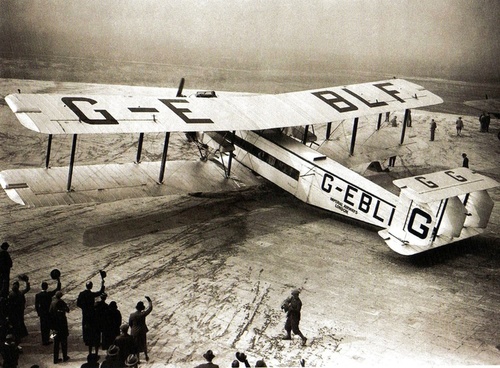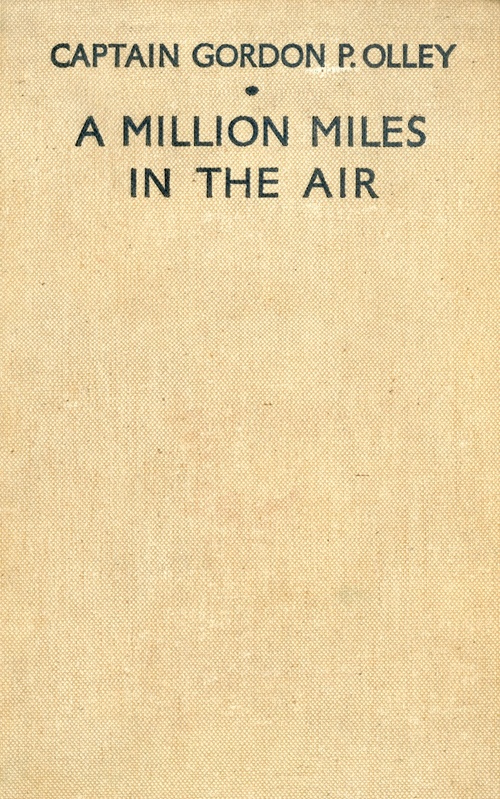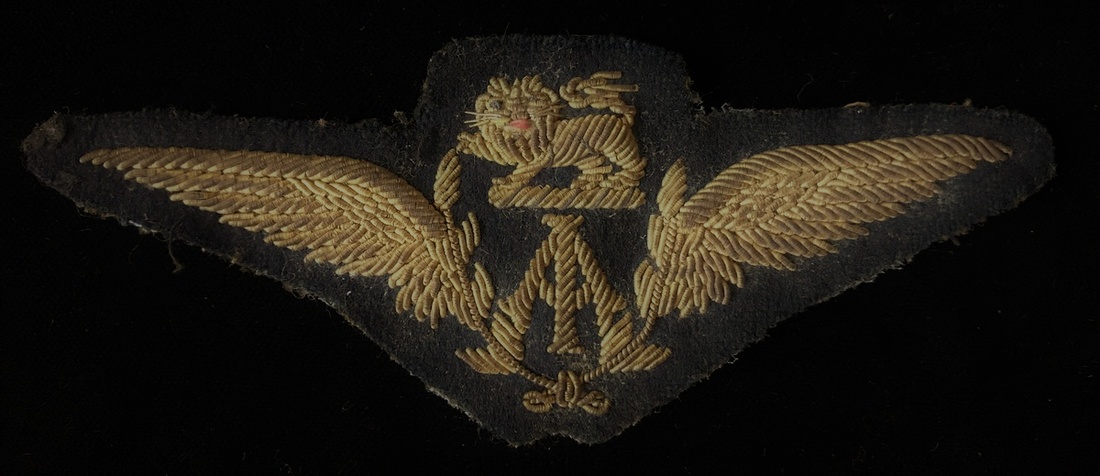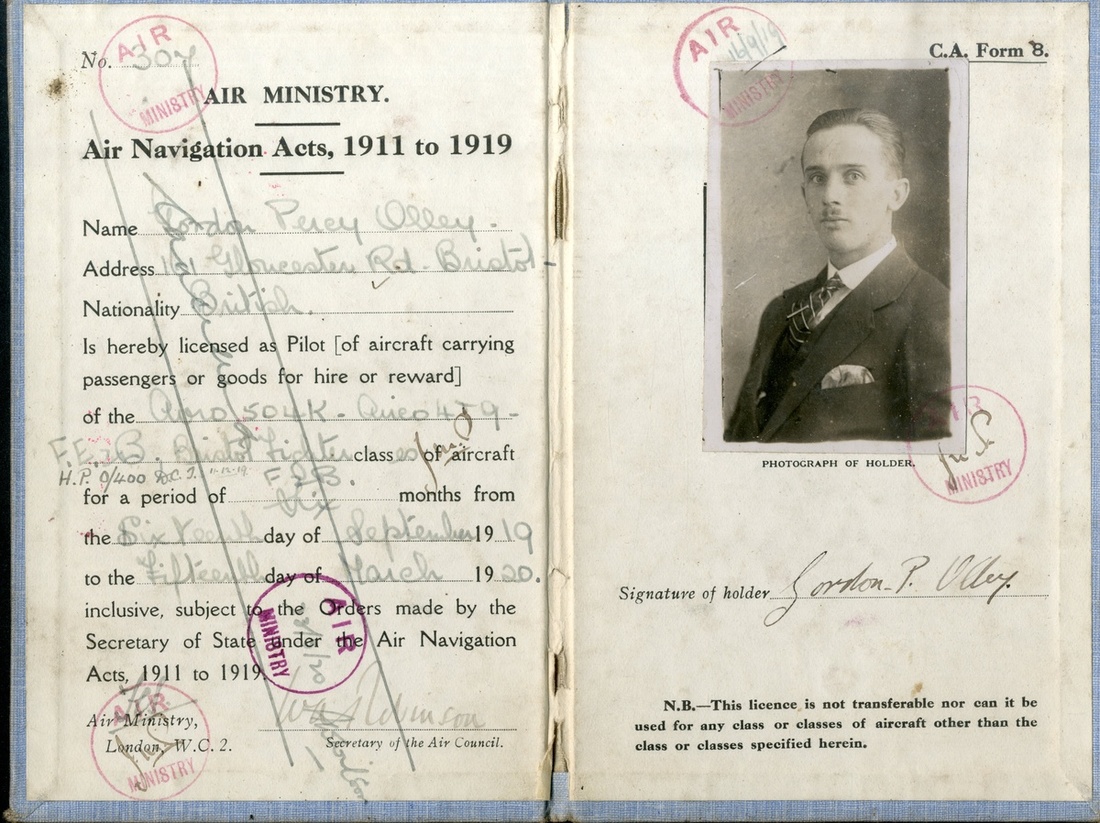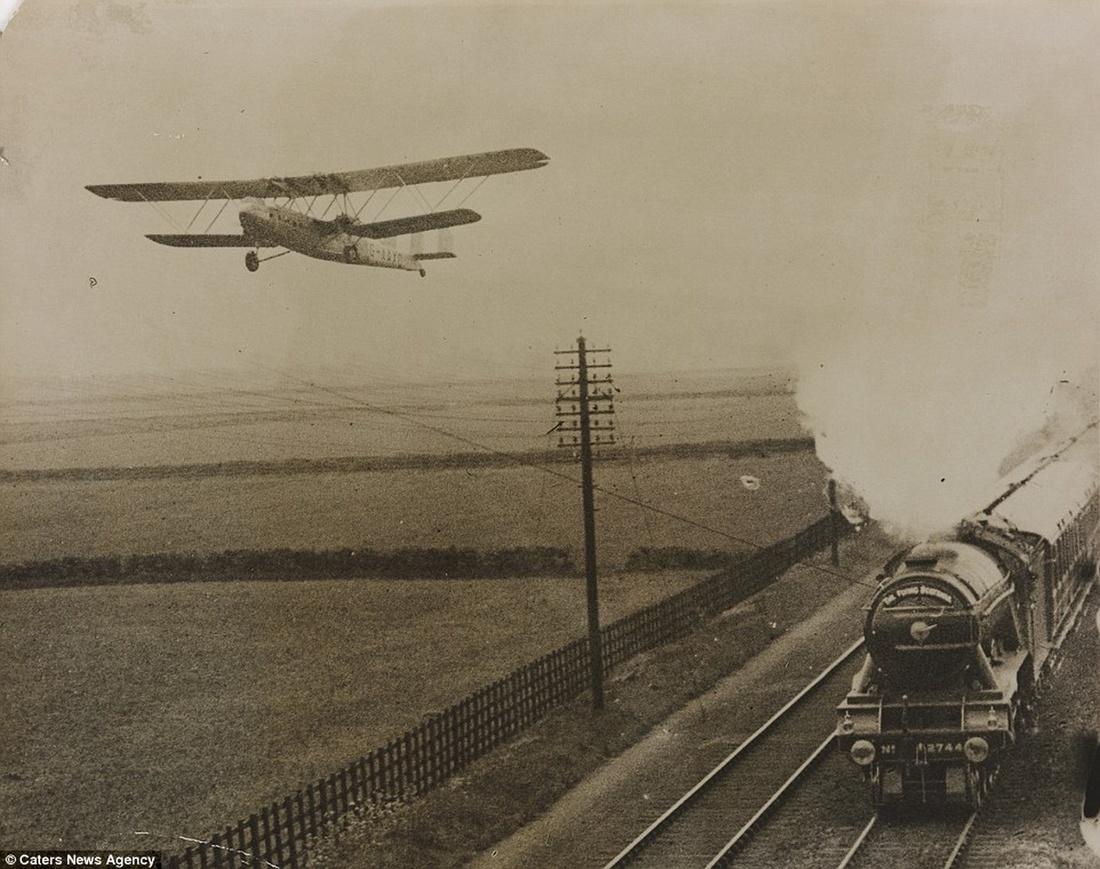Auction: 18001 - Orders, Decorations and Medals
Lot: 14
'It is a romance, all this, such as the world had never known before - a romance of speed, of human ingenuity, of immense technical achievement; a romance also of tremendous courage and personal skill … We have seen this great movement of the air go forward irresistibly. Nothing has been able to stop it. And today it has a future before it which will bring benefits and advantages to the entire world.'
'GPO' Olley - one of aviation's 'greats' - writing in 1934, the same year in which he established 'Olley Air Services'; A Million Miles in the Air, refers.
The important - and extremely rare - Great War fighter ace's M.M. group of four awarded to Sergeant G. P. Olley, Royal Air Force, late Royal Flying Corps, one of just 53 members of the R.F.C. to be likewise decorated for services in the air
Appropriately enough for 'The first pilot to fly one million miles', 'GPO' undertook his successful combat career in Nieuports of No. 1 Squadron, motto In omnibus princeps - 'First in all things'
Having gained his laurels as a Corporal Observer, he qualified as a pilot and - at high cost to the enemy - went into action in the second half of 1917: in a little over five months he raised his score to 10
His most memorable combat was that fought over Becelaere on 26 June 1917, for on that occasion he mixed with a flight of Jasta 11 under Rittmeister Manfred von Richthofen: taking out one of the Red Baron's comrades in convincing style, he nonetheless had to undertake a tricky landing back at base with most of his undercarriage shot away
His subsequent pioneering work in the golden age of civil aviation in the 1920s and 1930s - he was one of the 16 founder pilots of Imperial Airways - is recounted in his popular and entertaining title A Million Miles in the Air
It is a remarkable story, rich in the romance of the 'Silver Wing service' and rarely lacking drama. During his first flight to Paris in a converted Handley-Page he carried out 17 forced-landings before ending up in a field; on another outing to Belgium he forced-landed in the grounds of a monastery - he and his passengers 'were received hospitably' and spent the night in the monks' cells
In the summer of 1928 he hit the headlines for his part in a 'novel stunt', a much-publicised London to Edinburgh 'race' between him - piloting an Armstrong-Whitworth airliner - and the famous locomotive "Flying Scotsman." He won by 15 minutes
Meanwhile his special-charter work brought him into close contact with a host of household names, among them Albert, King of the Belgians, Feisal of Iraq, H.R.H. the Prince of Wales and the Hollywood star Douglas Fairbanks
One of his more unusual assignments was a special flight to Paris to collect the entertainer - she of banana fame - Josephine Baker. He later described her as a 'temperamental star' but they got on jolly well all the same
Military Medal, G.V.R. (6313 Sjt: G. P. Olley. R.F.C.); 1914-15 Star (6313 2-A.M. G. P. Olley. R.F.C.); British War and Victory Medals (6313 Sjt. G. P. Olley. R.F.C.), good very fine and better (4)
M.M. London Gazette 17 September 1918.
Gordon Percy Olley - better known to his contemporaries as 'GPO' - was born in Harleston, Norfolk on 29 April 1893. By 1901, his family had moved to Bristol, where his father found employment as a tobacconist and hairdresser. In his mid-teens, young Gordon commenced an apprenticeship in a wholesale clothing factory but by 1912, his employment suggested more glamourous ambitions: he was a 'motor salesman' at Selfridges, the famous London department store.
Dispatch rider
Olley enlisted in Queen Victoria's Rifles in August 1914 but, having thumped an objectionable Sergeant with his rifle , made haste to re-enlist in the Royal Fusiliers: 'I was a motor-cyclist, and had a machine of my own, so I found myself appointed as a dispatch-rider' (A Million Miles in the Air, refers).
Tiring with delivery work on the Whitehall run, he next transferred to the Royal Flying Corps, who were in need of qualified dispatch riders and, in March 1915, joined the strength of No. 1 Squadron in France. A few weeks later, he went to see the Squadron's C.O., Major Salmond, and told him that he wanted to learn to fly.
Baptism of fire - Corporal Observer
His request resulted in his appointment as a Corporal Observer. Olley takes up the story:
'I flew with an extremely fine Canadian pilot, Lieutenant Dore. Fighting in the air was a queer sort of affair away back then. We went up first with nothing more formidable than Winchester rifles, and took pot-shots at enemy aircraft which seldom came nearer to us than about a thousand yards. The, after a time, machine-guns were mounted in aeroplanes and we had to cruise about over German rail-heads, looking out for troop-trains. Whenever we managed to spot one we dropped a few bombs, and when the Germans came running out of the train, we dived low and opened fire with our machine-guns' (ibid).
On "Archie":
'The German "Archie," or anti-aircraft guns, kept loosing off at us. Their shells, when they burst anywhere near one's machine, did not explode with any ear-splitting roar, but simply with a puff of white smoke and a "wuff" rather like a dog barking. The pilot I used to fly with, Lieutenant Dore, became a master at dodging in and out of anti-aircraft fire. But, even so, the air casualties began to grow considerably, and there was an urgent demand for new pilots' (ibid).
That urgency led to Olley being sent home to qualify for his 'Wings'. He began his tuition on a Maurice Farman biplane on Salisbury Plain, and flew his first solo after just three hours tuition:
'The exhilaration of that first solo flight was a sensation I shall never forget; it drove everything out of my mind … I flew off across the Plain and made my first landing - actually I made something like thirty landings that afternoon; until I last I found myself in a field near Newbury, having quite lost my bearings, and with only a few drops of petrol in my tank. But I did not care. I was too happy for that' (ibid).
Unfortunately for Olley, his flying instructor - who eventually located his errant pupil - did care. He was subjected to a severe reprimand and grounded for three days. But following this escapade, his training continued apace and, on reaching around 20 hours of flying time with just one 'prang', he was ordered to France, where he re-joined No. 1 Squadron in May 1917.
Sergeant Pilot - fighter ace
He was quickly in action in unit's Nieuports:
'A newly arrived N.C.O. pilot, Sergeant G. P. Olley, displayed early promise on the 27 May when he single-handedly tackled two E.A. scouts. The fight took place at 10.40 over Tourcoing and although no decisive results were gained, it was to be the start of another distinguished career' (A History of No. 1 Squadron, by Russell Gannon, refers).
On the first day of June, Olley attacked a 2-seater over the Messines Ridge at 07.50 hours. The enemy aircraft went down vertically after he had fired 50 rounds and although he followed it down for some distance he did not observe it crash. On his return he found that British A.A. had seen its fall but were unable to confirm whether it crashed due to the Ridge. He was credited with one down, out of control.
Gannon's history continues:
'A report of a three 2-seaters over British lines near Wulverghem brought 2nd Lieutenant Campbell (B1700) and Sergeant Olley (B1681) into action on the 23rd. As they approached the E.A. formation, two immediately turned towards the East but they were still able to engage the third, which they described as an LVG. Sergeant Olley attacked from above and fired one drum, while Campbell came in from below and fired three drums. They observed many hits on this machine and it went down in a vertical dive with its engine full on. Just above the clouds it turned onto its back and disappeared from sight. Although only credited as O.O.C., the location of this claim suggests that it may have been an aircraft from FAA 204, which crashed in British lines after having been claimed by A.A.! Of the crew, Leutnant K. Winter was taken prisoner, while Leutnant W. Lous was killed.'
His next - most memorable - combat occurred on the 26 June, when his squadron provided an escort to a pair of Sopwiths from No. 45 Squadron and ran into Rittmeister Manfred von Richthofen's flying circus. Gannon's history takes up the story:
'At 21.00 while over Becelaere the formation had an engagement with six Albatros scouts. During the ensuing fight 2nd Lieutenant Reeves (B1630) managed to get 40 rounds into a "yellow" scout at short range and sent it down O.O.C. Most of the E.A. however were painted "red" and Sergeant Olley (B163l) also sent one of these down O.O.C. Lieutenant C. C. Street was not so lucky, he was engaged by Leutnant Allmenroder of Jasta 11 and was shot down in Nieuport B1649, crashing into British trenches. Street was killed and became the 30th and last victory for the German ace. Von Richthofen was apparently leading this attack but left his men to deal with the British fighters while he went after the 2-seaters. He claimed to have crashed a De Haviland DD although both the 45 Squadron machines apparently returned! This claim has confounded many authors and unless it was a Belgian machine, doubt must be raised as to the accuracy of the Baron's report.'
Be that as it may, Olley's run-in with the Red Baron's flying circus was not without further incident. He had to undertake a forced-landing in consequence of damage caused by return fire:
'I remember, after [this] fierce "scrap" up in the air, I had to make the best landing I could with most of my under-carriage shot away. Somehow or other I managed to get the machine down without its turning over; and then it slid along the ground for some distance, the wings finally collapsing and folding down all round me in such ludicrous fashion that the incident would have been worthy of one of Mr. Harry Tate's comic sketches (A Million Miles in the Air, refers).
Another run-in with enemy scouts occurred on 16 July during a patrol led by Captain Campbell. The combat started when No. 1's flight attacked eight Albatros scouts over Poelcapelle at 19.20 hours. Almost immediately Captain Campbell downed the leader of these scouts. Olley himself mixed with three of them, just to the south of Poelcapelle and claimed one of them - a 'bright green' painted scout - as confirmed.
By now of ace-standing, Olley went on to double his score in a little over a month. On 12 August, he drove down a two-seater out of control, east of Tenbrielen. In the following month, on the 11th, when a No. 1 Squadron patrol attacked nine Albatros Scouts near Houthulst Forest, he downed another out of control. And before the month's end - on the 21st - he took out a DFW during a morning patrol over Wervicq; the previous day he had dropped down to as low as 100 feet to machine-gum enemy trenches, transport and batteries.
He was awarded the M.M.
In October he raised his score to 10, claiming a DFW out of control during a patrol east of Becalaere on the 2nd; another 2-seater - a confirmed 'kill' - in a combat fought west of Roulers on the 5th and finally, on the 14th, a DFW out of control after a combat near Wervicq.
His final score comprised three destroyed and five (and two shared) out of control.
Rested with an appointment as a ferry pilot back on the home establishment, he was commissioned in the temporary rank of 2nd Lieutenant on the General List. He was subsequently sent to 'a big aircraft firm in the provinces to test some new aircraft'. Olley takes up the story:
'This work of testing new and untried craft certainly had its exciting moments. Cylinders would suddenly blow off engines. Mechanical defects of all kinds would develop in the air. One had to make hurried forced landings in all sorts of awkward places. But, though it was all rather trying, it was, of course, fine experience from a flying point of view, teaching one to be ready for any sort of emergency that might arise. And somehow or other, I always managed to get down without mishap' (ibid).
Having then been advanced to Lieutenant on the formation of the R.A.F. in April 1918, he was placed on the Unemployed List on 22 June 1919.
In passing, Olley was subsequently appointed a Flying Officer in the Reserve of Air Force Officers in 1923 and transferred to 'Class C' of the Reserve in 1932. He was permitted to retain his rank on relinquishing commission in December 1936.
The golden age of civil aviation - one million miles up
On departing the R.A.F. in the summer of 1919, Olley joined Handley Page Transport Ltd., flying on the first Continental air services. In 1921 he inaugurated the London - Amsterdam route for K.L.M. and three years later he became a founder pilot of Imperial Airways. He was subsequently among the handful of pilots who flew the famous 'Silver Wing service' from Croydon to Paris.
By September 1925, he had flown the English Channel 1500 times and by early 1927 he had carried his 10,000th passenger. In the same period, as reported in Flight, he also set flight records:
'Mr. G. P. Olley, an Imperial Airways pilot, arrived at Croydon aerodrome in an 8-seater air liner at 5.39 p.m. yesterday, having flown from Southampton Water in 26 minutes. This is a new record for the 70 miles journey, and average speed of the Vickers-Napier machine was over 161 miles hour. The aeroplane, which is in regular use on Continental routes, left Hamble at 5.13 p.m.'
And in August 1928:
'Captain G. P. Olley, an Imperial Airways pilot, created a new record by flying non-stop from London to Belfast in four and a half hours. His machine had been chartered to take special pistons for a motor-car running in the Tourist Trophy race. He did not leave London until after 5 o'clock, the last part of the flight across the sea, and his landing at Belfast at 9:50, being accomplished in darkness' (ibid).
In the same year, Olley participated in a much-publicised race. Flight takes up the story:
'A novel "stunt" was carried out on June 15 when a simultaneous journey was made from London to Edinburgh by train and aeroplane - the "Flying Scotsman" and the Imperial Airways Armstrong-Whitworth air liner "City of Glasgow" respectively. After breakfast at the Savoy Hotel, the two parties of travellers proceeded to their respective points of departure - King's Cross and Croydon. Train and aeroplane both departed at the same time, 10 a.m., the "City of Glasgow" being piloted by Captain G. P. Olley, who was accompanied by Mr. J. Birkett, aged 79, a retired L.N.E.R. engine driver, Air Vice-Marshal Sir Vyell Vyvyan and Major Brackley. Captain O. P. Jones, Imperial Airways pilot, was a passenger on the train! The "City of Glasgow" flew via the East Coast, and made stops at Bircham, Newton, and Cramlington; it arrived at Turnhouse Aerodrome, Edinburgh, 15 minutes before the "Flying Scotsman" reached Waverley Station.'
In 1931 he was acclaimed as 'the first pilot to fly a million miles', for he had undertaken much 'special-charter' work overseas. As revealed in the pages of A Million Miles in the Air, Olley was frequently engaged on mercy missions. A case in point was a frantic flight to Cairo in early 1932, as reported in the press:
'A 3000-mile air dash from Cairo to the bedside of the Earl of Inchcape, who is seriously ill in London, will be commenced at dawn to-day by Viscount Glenapp the Earl's son and heir.
Captain G. P. Olley, the Imperial Airways pilot, has arrived in Cairo with an air liner which had been chartered from Imperial Airways, having flown from London via Italy, Malta, and the north coast of Africa in order to bring Lord Glenapp to London.
Lord Glenapp, who was travelling by P. and O. liner from India, as the result of a wireless message to the liner, was to leave it when it berthed last night at Port Said and proceed by train to Cairo. He hopes arrive in London on Monday evening.'
Thanks to his famous pilot, he did.
Olley continued to be a Chief Pilot for Imperial Airways until 1934, when he took the bold decision to establish his own business, 'Olley Air Services Limited'. The firm originally operated from its base at Croydon Airport as a charter airline and eventually became part of a group of airlines that included Blackpool & West Coast Air Services, Channel Air Ferries and Isle of Man Air Services. After the Second World War the airline resumed services from Croydon as both a charter airline and a scheduled service before being sold to Morton Air Services in 1953.
Olley, who for the age amassed a staggering total of 13,000 hours of flying time, died in Wimbledon on 18 March 1958. His numerous obituary notices revealed yet further accolades:
He established a duration record in a glider in 1922; he held every licence available to a pilot; not one of his 40,000 passengers became a casualty.
They'll be more.
Postscript
Olley's legacy lives on in a scholarship at the University of Tasmania:
'Captain Gordon P. Olley, the father of British commercial aviation, distinguished himself in the industry as the first man to fly one million miles. His exploits range from air duels over France and Belgium in World War One to the creation of his own civil aviation company, Olley Air Services, which between the world wars flew the rich and well-connected throughout Europe, America, Asia and Africa using only crude equipment and primitive navigation facilities.
His daughter, Dr. June Olley, A.M., a long-time Honorary Professor in the School of Agricultural Sciences has determined to recognise her father's achievements by establishing a scholarship in his name which seeks to involve current UTAS students in the broad area of aviation/aeronautics - whether through medicine, engineering, science, law or another discipline.
The University's website, refers.
Sold with a rare series of original flying licences and related certificates, comprising:
(i)
Air Ministry Licence for Pilots of Aircraft (C. A. Form 8.) to 'Gordon Percy Olley', dated 16 September 1919, including an excellent Air Ministry stamped half-length portrait photograph of Olley in civilian attire; together with a corresponding Air Ministry Licence for Pilots of Aircraft Carrying Passengers or Goods for Hire or Reward (C. A. Form 8B), No. 307, Class B, to 'Gordon Percy Olley', dated 16 September 1919. This contains regular Air Ministry stamps showing licence extension, from 16 March 1920 to 17 May 1923 and includes a second Air Ministry stamped portrait photograph of Olley in civilian attire.
(ii)
'Licence 2' Certificate of Competency for Passenger, Mail or Goods Flying Machines (Public Transport), issued to 'G. P. Olley' in London on 10 June 1924; this displays the regular renewal of his licence based upon passing medical examinations from 20 May 1924 to 7 January 1931.
(iii)
Private Pilot's Certificate of Competency, issued to G. P. Olley in London on 12 February 1930; this displays the renewal of his Private licence from 12 February 1930 to 11 February 1931.
(iv)
Aircraft Navigator's Certificate of Competency, 2nd Class, No. 38, issued to 'G. P. Olley' in Bristol on 9 March 1940; this displays the renewal of his licence based upon medical examinations, from 20 February 1940 to 15 August 1949.
(v)
United Kingdom Ministry of Civil Aviation, Private Pilot's Licence (Flying Machine) (Form 604), No. 307, issued to 'Gordon Percy Olley', 30 June 1950; valid from 30 June 1950 to 20 June 1951.
(vi)
Freedom of the City of London, an ornate certificate held in a card wallet, to 'Gordon Percy Olley, Citizen and Coachmaker and Coach Harness Maker, of London', as presented in the Mayoralty of Sir Frank Samuel Alexander, on 15 October 1945.
Subject to 20% VAT on Buyer’s Premium. For more information please view Terms and Conditions for Buyers.
Estimate
£12,000 to £15,000

